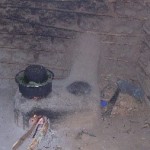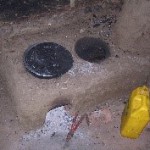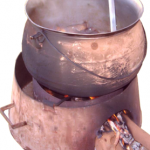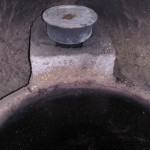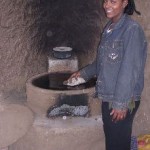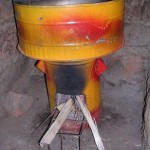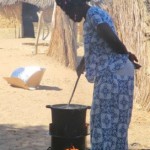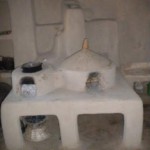 Next to the CooKit, the use of wood-saving cooking appliances is essential in the evenings, when the sky is overcast and when it rains.
Next to the CooKit, the use of wood-saving cooking appliances is essential in the evenings, when the sky is overcast and when it rains.
In large parts of Africa, women still cook on the traditional 3-stone fire, often even inside. This requires a lot of firewood and its subsequent smoke emission is bad for one’s health and causes eye diseases as well. The wood-saving appliance is a huge improvement. Food can be prepared with a quarter of the amount of wood needed for a 3-stone fire. Cooking appliance models vary per country or region. Usually, they are made by the local blacksmith (rocket stove in Uganda and Ethiopia).
In many African countries, the cooking is done on wood-saving stoves built of locally available soil.
Since the fire burns in the appliance and not in the open air, the wood burns much better and less of it is lost. Moreover, much less CO2 is released while at the same time there is considerably less smoke emission.
In larger families, the women also use the stove to cook for example rice or pasta dishes (which can be finished cooking in the hay basket). They use the CooKit for side dishes. To bake injera (a type of pancake in East-African countries) a wood-saving cooking appliance is used (Mirt medja).
Examples of wood-saving cooking appliances
Short films about the making of a Rocket Stove:
- How to make a Tin Can Rocket Stove out of 5 gallon salad oil can
- How to make a 16 Brick Rocket Stove out of unfired adobe bricks
Rocket Stone Stove (www.solarcooking.org/plans)
Want to buy a Rocket stove? Go to www.rocketstoves.org




